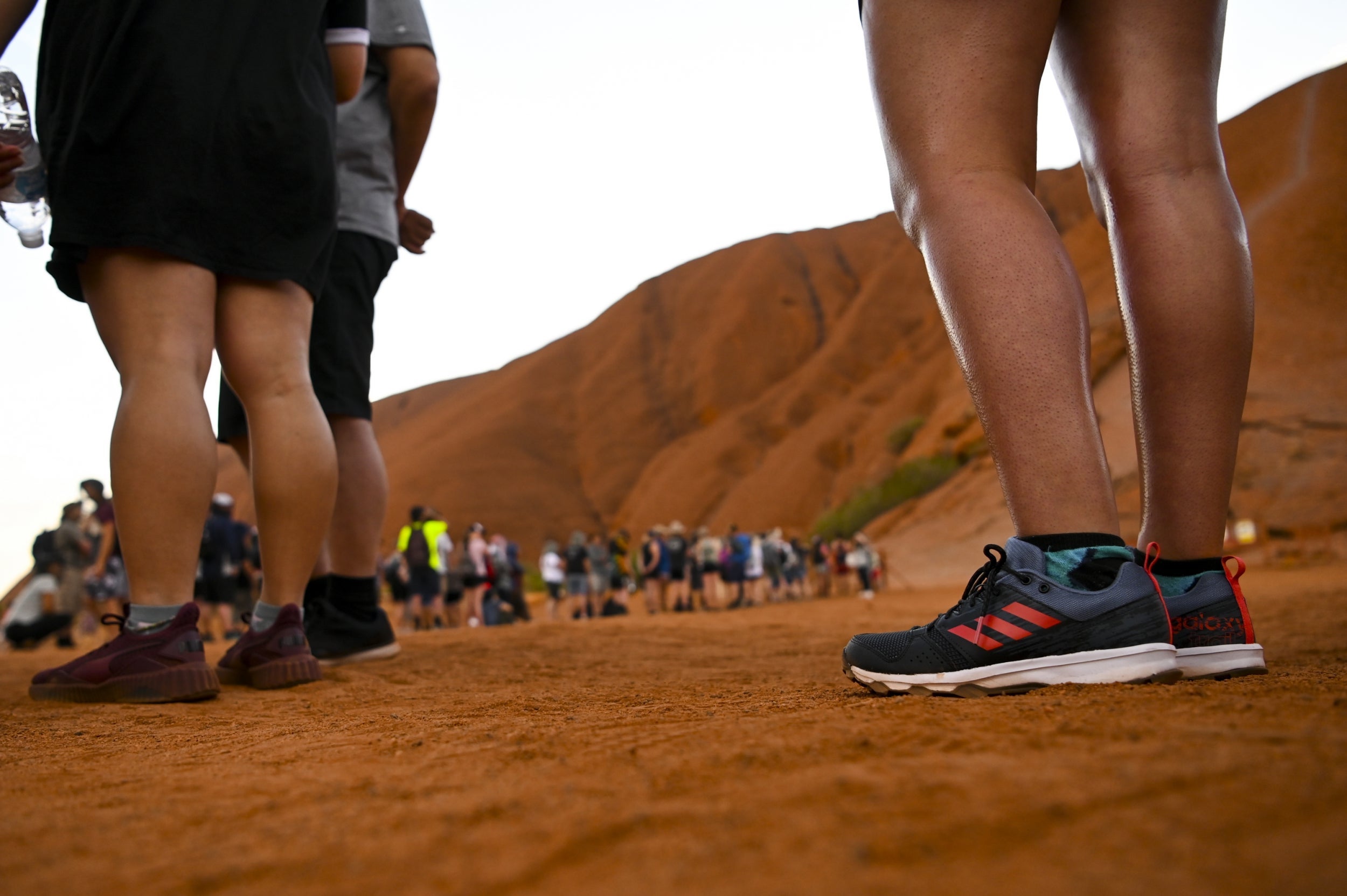Hundreds queue up to climb Uluru before practice is banned this weekend
Ban comes into force on 26 October

Your support helps us to tell the story
From reproductive rights to climate change to Big Tech, The Independent is on the ground when the story is developing. Whether it's investigating the financials of Elon Musk's pro-Trump PAC or producing our latest documentary, 'The A Word', which shines a light on the American women fighting for reproductive rights, we know how important it is to parse out the facts from the messaging.
At such a critical moment in US history, we need reporters on the ground. Your donation allows us to keep sending journalists to speak to both sides of the story.
The Independent is trusted by Americans across the entire political spectrum. And unlike many other quality news outlets, we choose not to lock Americans out of our reporting and analysis with paywalls. We believe quality journalism should be available to everyone, paid for by those who can afford it.
Your support makes all the difference.Tourists have been filmed queuing in their hundreds for a chance to ascend Uluru before a climbing ban comes into effect.
On Saturday 26 October, climbing the landmark formerly known as Ayers Rock in Australia will be prohibited, and those caught trying will incur a hefty fine.
Journalist Oliver Gordon tweeted a video of the line of people waiting to make their way up the iconic rock.
“One day out from Uluru climb closure, this is the line at 7am,” he wrote to accompany the clip, which shows a several hundred-strong queue at the rock’s base.
The video has had more than 200,000 views.
The Uluru-Kata Tjuta National Park board of management first took the unanimous decision to introduce a ban back in October 2017, due to the landmark’s spiritual significance to indigenous Australians who consider it to be sacred and have been asking people to stop climbing it for many years – and the inherent risks in making the trek to the top.
More than 35 people have lost their lives scaling Uluru since tourism began in the 1940s. In 2016, three Australian tourists had to be retrieved after falling into a crevice.
“It is an extremely important place, not a playground or theme park like Disneyland,” board chairman Sammy Wilson, who is Anangu, said back when the decision was made.
“If I travel to another country and there is a sacred site, an area of restricted access, I don’t enter or climb it, I respect it.”
He added: “Closing the climb is not something to feel upset about but a cause for celebration. Let’s come together; let’s close it together.”
Since the impending ban was announced, more people than ever have flocked to the Red Centre to make the climb before it’s too late, totalling nearly 10,000 extra visitors a month on average in the last six months.
In July 2019, 57,000 people came to the park, an increase of 42,000 year-on-year, reports the ABC.
Many of these are clearly choosing to ignore the sign at Uluru’s base, which reads: “We, the traditional Anangu owners, have this to say. Uluru is sacred in our culture, a place of great knowledge. Under our traditional law, climbing is not permitted. This is our home. Please don’t climb.”
Many Twitter users expressed disappointment that tourists would still choose to sneak in a climb before the ban, knowing Uluru’s significance to the Anangu people.
“I do not understand this at all,” tweeted Lorraine Williams. “When we visited Uluru before moving to Australia it never crossed our minds to climb – the best view is the rock itself – and we respected and still respect the traditional owners and their request not to climb. So disappointing to see this.”
Terry Australis added: “Imagine being specifically, repeatedly, and very politely asked not to do something – with very good safety, environmental and cultural reasons being outlined at length – and still acting like this.”
“I am absolutely disgusted at this. Absolutely no respect for the traditional owners’ wishes,” added another Twitter user.
Join our commenting forum
Join thought-provoking conversations, follow other Independent readers and see their replies
Comments